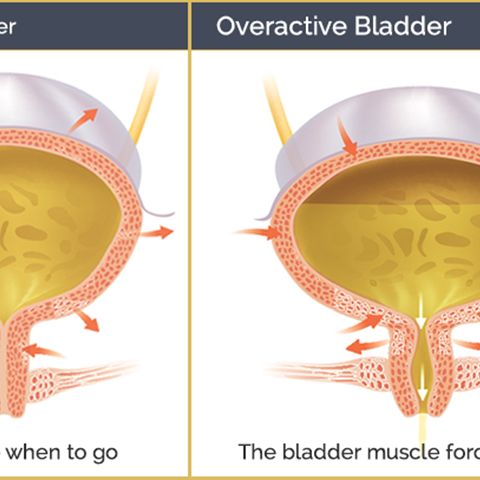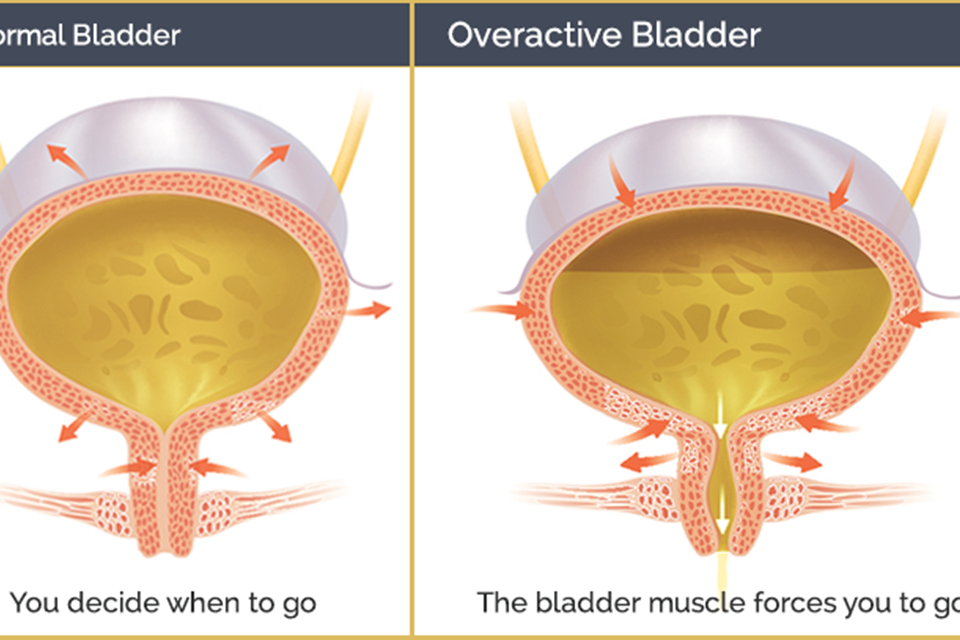Can You Treat an Overactive Bladder?

Thursday, 27 July 2023
 Copyright: https://www.starclinic.org
Copyright: https://www.starclinic.org
An overactive bladder (OAB) is a common and bothersome condition that affects millions of people worldwide, particularly the elderly. It can significantly impact one's quality of life, causing frequent and urgent trips to the toilet, disrupting sleep, and limiting social activities. If you find yourself constantly rushing to the bathroom or experiencing involuntary urinary leaks, you might be wondering if there's a way to treat an overactive bladder effectively. The good news is, yes, there are various treatment options available that can help manage and alleviate the symptoms of an overactive bladder. Mr Broome at the Pelvic Clinic sees many women with this condition every week.
Lifestyle Modifications
Before considering medical interventions, it's essential to implement some lifestyle changes that can have a positive impact on your overactive bladder symptoms. These modifications can be a crucial first step towards managing the condition.
1. Fluid Management: Pay close attention to your fluid intake, especially if you consume a lot of caffeinated or alcoholic drinks. Cutting down on these diuretic drinks can help reduce the frequency of bathroom visits.
2. Bladder Training: Bladder training involves gradually increasing the time between toilet breaks to help retrain your bladder to hold urine for more extended periods. This process can take some time and patience but can be effective in improving bladder control.
3. Diet: Certain foods and can irritate the bladder and worsen overactive bladder symptoms. Spicy foods, acidic fruits, and artificial sweeteners are common triggers that you may want to avoid.
4. Weight Management: Maintaining a healthy weight can alleviate pressure on the bladder and pelvic muscles, potentially improving overactive bladder symptoms.
Behavioural Therapies for an overactive bladder
Behavioural therapies can be an essential part of managing an overactive bladder and are often used in conjunction with lifestyle modifications.
1. Pelvic Floor Exercises: Also known as Kegel exercises, these movements strengthen the pelvic floor muscles, which play a significant role in bladder control. Regularly practicing pelvic floor exercises can enhance bladder function and reduce leaks.
2. Biofeedback: Biofeedback techniques involve using monitoring devices to gain awareness and control over certain bodily functions, such as muscle contractions. This method can be useful in helping individuals gain control over their pelvic muscles and bladder.
3. Scheduled Toilet Trips: Setting specific times for bathroom breaks, even if you don't feel the urge, can help prevent urgent and frequent trips to the toilet.
4. Pilates: Both mat and reformer Pilates are exercises that focus only on building up strength in your muscles, including your pelvic floor.
Medications
When lifestyle changes and behavioural therapies are not sufficient to manage an overactive bladder, medications may be prescribed to help alleviate symptoms. It's essential to consult with a healthcare professional such as Mr Broome to determine the most suitable medication for your specific condition, as different medications work in various ways. Some common types of OAB medications include:
1. Anticholinergics: These drugs work by blocking the action of acetylcholine, a neurotransmitter that can trigger bladder contractions. By doing so, anticholinergics can help reduce the frequency of toilet visits and urinary urgency.
2. Beta-3 Agonists: This class of medication relaxes the bladder muscle, increasing its capacity to hold urine and reducing the frequency of involuntary contractions.
3. Mirabegron: As a specific type of beta-3 agonist, Mirabegron increases bladder capacity and reduces the number of bladder contractions. It is a newer option and may be suitable for those who cannot tolerate anticholinergic medications.
Invasive Treatments
In some cases, when lifestyle changes, behavioural therapies, and medications do not provide sufficient relief, more invasive treatments may be considered. These interventions are usually reserved for severe cases of OAB or when other methods have proven ineffective.
1. Botox Injections: Botulinum toxin A, commonly known as Botox, can be injected into the bladder muscle to paralyse it temporarily. This procedure reduces overactivity and helps increase the bladder's capacity to hold urine.
2. Nerve Stimulation:
Percutaneous Tibial Nerve Stimulation (PTNS) involves stimulating a branch of the sacral nerve located behind the ankle bone with a small electrical current through an acupuncture needle, usually 12 weekly sessions of 30mins are required to see improvement in OAB symptoms.
Sacral nerve stimulation involves implanting a small device near the sacral nerve, which plays a role in bladder control. The device sends electrical impulses to the nerve, helping to regulate bladder function.
3. Bladder Augmentation: This surgical procedure involves enlarging the bladder using a part of the patient's intestine. While it can increase bladder capacity, it is generally considered a last resort due to its complexity and potential complications.
Conclusion
An overactive bladder can be a challenging and disruptive condition, but it's essential to know that effective treatments are available. Lifestyle modifications, behavioural therapies, medications, non-invasive and in some cases, invasive treatments can significantly improve symptoms and enhance the quality of life for those affected by OAB. If you or a loved one are experiencing symptoms of an overactive bladder, don't hesitate to contact Mr Broome for a proper evaluation and personalised treatment plan. Remember, seeking help and taking proactive steps can lead to better bladder control and a more comfortable life.
